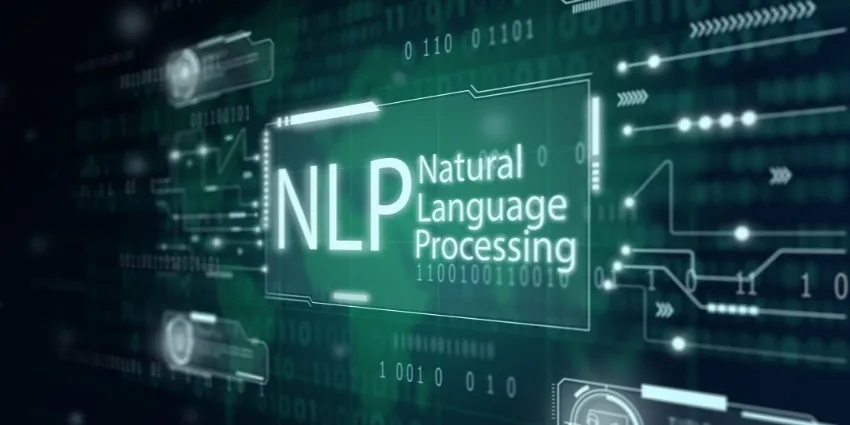Natural Language Processing Technology Review

Natural Language Processing (NLP) is a rapidly evolving field within artificial intelligence that focuses on the interaction between computers and human language. Emerging from the intersections of computer science, artificial intelligence, and linguistics, NLP technology aims to enable machines to understand, interpret, and generate human language in a way that is both meaningful and useful. The origins of NLP date back to the 1950s, with the advent of machine translation and early computational models of language processing. Over the decades, the technology has matured significantly, especially with the development of more advanced algorithms and the increase in computational power.
The foundational goal of NLP is to facilitate effective communication between humans and machines. Early efforts in the 1950s, such as the Georgetown-IBM experiment, which involved the automatic translation of Russian sentences into English, set the stage for future advancements. The 1980s and 1990s saw the advent of statistical models and machine learning techniques, which dramatically improved the accuracy and efficiency of NLP systems. By the 21st century, with the introduction of deep learning and neural networks, NLP has achieved unprecedented levels of sophistication, enabling applications that were once considered the realm of science fiction.
How Natural Language Processing Works
At its core, NLP technology is structured around several key components and processes. The first step in NLP involves preprocessing the text, which includes tokenization (breaking down text into individual words or phrases), stemming or lemmatization (reducing words to their root forms), and part-of-speech tagging (identifying the grammatical category of each word). Following preprocessing, the text undergoes parsing, where the grammatical structure is analyzed to understand the syntactic relationships between words. Named entity recognition (NER) is another crucial component, which involves identifying and classifying entities such as names, dates, and locations within the text.
Deep learning techniques have revolutionized NLP by introducing complex neural network architectures, such as recurrent neural networks (RNNs) and transformers. RNNs are particularly effective for sequential data, allowing the model to maintain context by considering previous inputs in the sequence. Transformers, on the other hand, leverage attention mechanisms to weigh the importance of different words in a sentence, leading to more accurate and contextually aware interpretations. These advancements have paved the way for sophisticated models like BERT (Bidirectional Encoder Representations from Transformers) and GPT (Generative Pre-trained Transformer), which have set new benchmarks in tasks like language translation, summarization, and sentiment analysis.
Applications of Natural Language Processing NLP technology is employed across a diverse range of applications, making it integral to numerous industries. In customer service, chatbots and virtual assistants leverage NLP to interact with users, answer queries, and provide support. In healthcare, NLP aids in the extraction and analysis of clinical data, improving patient care and facilitating medical research. Financial institutions utilize NLP for sentiment analysis in market research, fraud detection, and automated trading. Additionally, search engines and content recommendation systems heavily rely on NLP to deliver relevant and personalized content to users.

Effectiveness of NLP Technology
The effectiveness of NLP technology is evident in its widespread adoption and the tangible benefits it provides. In customer service, NLP-powered chatbots have significantly reduced response times and improved user satisfaction. In healthcare, NLP has enabled the efficient analysis of large volumes of unstructured medical records, leading to better patient outcomes. Financial services have benefited from NLP through enhanced risk management and more informed decision-making processes. Furthermore, the advancements in language models have led to improvements in translation accuracy and the ability to generate coherent and contextually relevant text.
Despite its successes, NLP technology continues to face challenges, such as understanding context, managing ambiguity, and handling diverse linguistic structures. However, ongoing research and development efforts are constantly pushing the boundaries, making NLP increasingly robust and versatile. The integration of multimodal learning, which combines text with other forms of data like images and audio, holds promise for further enhancing NLP capabilities.
Future Applications of Natural Language Processing
Looking ahead, the potential applications of NLP are vast and varied. In education, NLP can be used to develop intelligent tutoring systems that provide personalized feedback and support to students. In legal and compliance sectors, NLP can assist in the analysis of legal documents and the automation of regulatory compliance processes. Additionally, as smart cities become more prevalent, NLP will play a crucial role in interpreting and managing the vast amounts of data generated by interconnected devices, enhancing urban planning and public services.
The future of NLP is undoubtedly exciting, with ongoing advancements poised to further revolutionize how we interact with technology. As researchers continue to address current limitations and explore new frontiers, NLP is set to become an even more integral part of our daily lives, driving innovation and improving efficiency across various domains.
